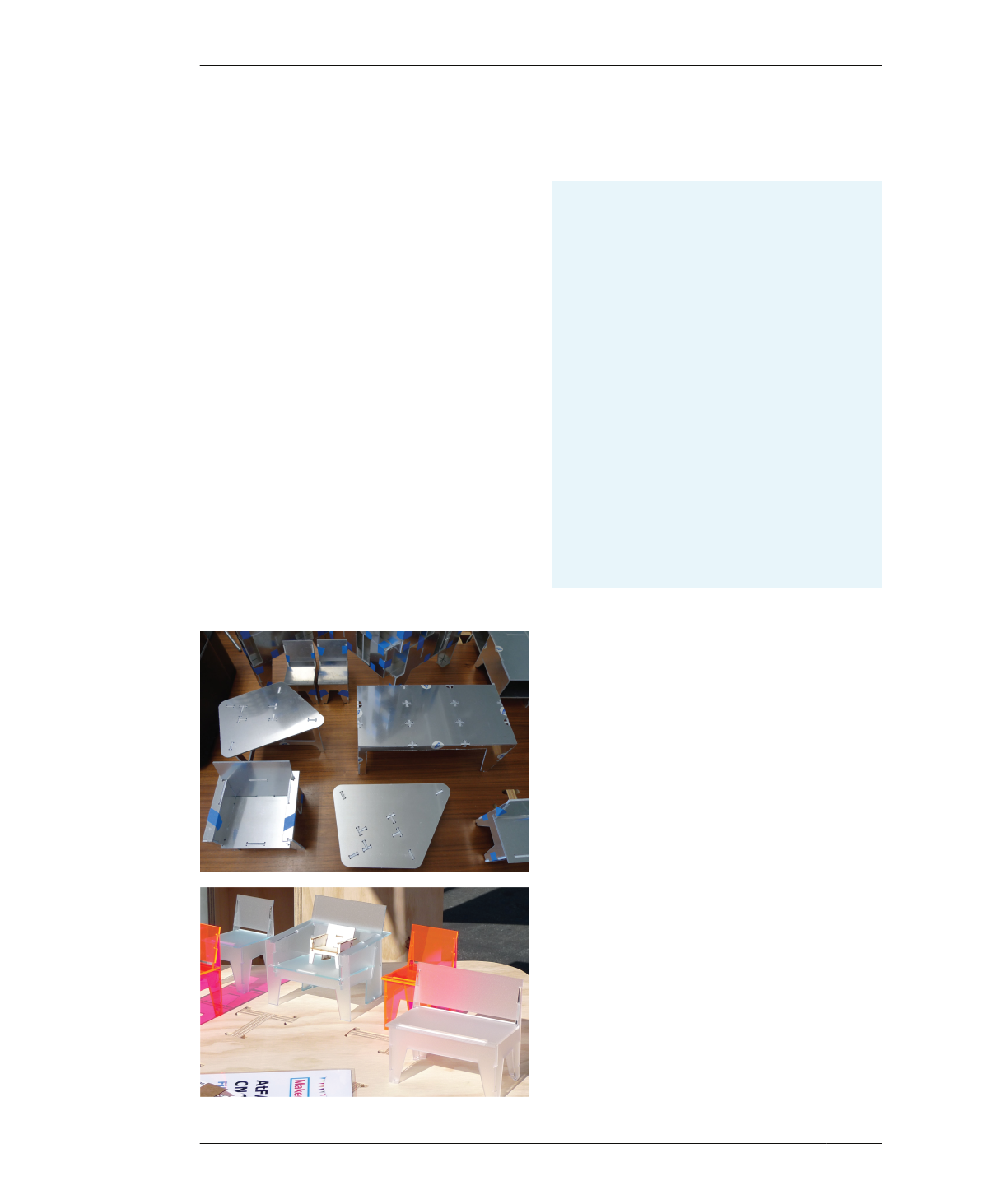
PROTOTYPING
FIGURE 5-10
Scale furniture proto-
types made of 1⁄8″ alu-
minum cut by a CNC
waterjet
space, you have a quick and inexpensive way to
make scale prototypes of digital designs.
Although they are small, scale prototypes can
assist you in analyzing structural integrity, test-
ing accurate fit between parts, and evaluating
complex patterns or embellishments. They’re
also helpful if you’re making modifications to
the projects throughout this book, as they help
confirm that you haven’t misplaced a sniglet or
misaligned a joint. Scale prototypes allow you
to see the overall composition of details in
physical space. Understanding the whole
object enables you to intelligently analyze a
design in ways that you may have not imagined,
when looking at the CAD screen.
To prepare a scale prototype file, you simply fol-
low the same steps as you would in adjusting a
CAD file (explained in “Scale Your CAD File” on
page 133). The only difference is that thin pro-
totyping materials like acrylic or cardboard
have a TMAX, which is much smaller than
nominal plywood thickness. Scaling toolpaths
to match this thickness requires a much
smaller S percentage.
SURPLUS MATERIAL
Always purchase extra material for testing and for
recutting parts. Surplus plywood is also useful for
partial prototypes and in the event that a part is
damaged during the cutting, finishing, or assembly
process. With extra material on hand, you can easily
cut a replacement part for one that was damaged by
human or machine.
As you embark on your first projects, we recom-
mend that you purchase a second sheet of plywood,
or cut a small project and reserve the other half
sheet for testing.
In the project chapters, we recommend that you
have at least 1'x4’ of additional material on hand for
every project in this book—but it’s a best practice to
have an extra half or full sheet around.
FIGURE 5-11
Chair prototypes in dif-
ferent scales made of
laser-cut plexiglass and
chipboard
138
DESIGN FOR CNC
